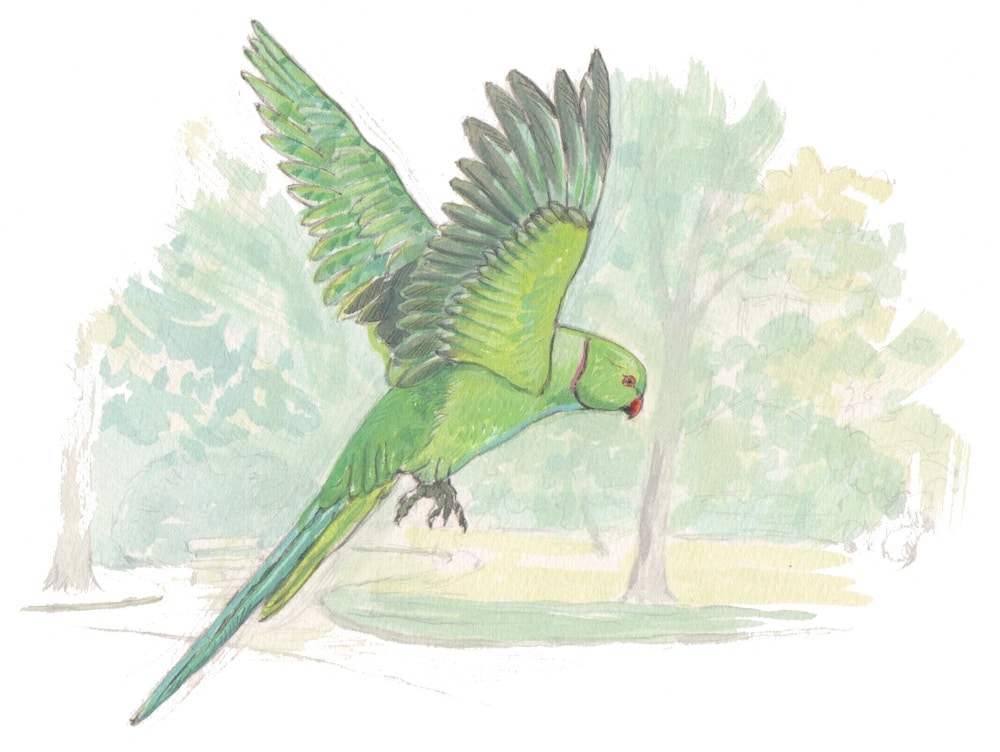Photo by © Aylata
**This article is a direct feature from the March/April 2024 My French Country Home magazine. To see more articles like this featuring fascinating tidbits about local French culture, be sure to subscribe to the magazine!**
Casual visitors to the grand parks and squares of the French capital don’t always notice them. But if, on your next visit to Paris, you see a flash of vibrant green plumage darting among the ancient chestnut and plane trees, rest assured: You are not hallucinating!
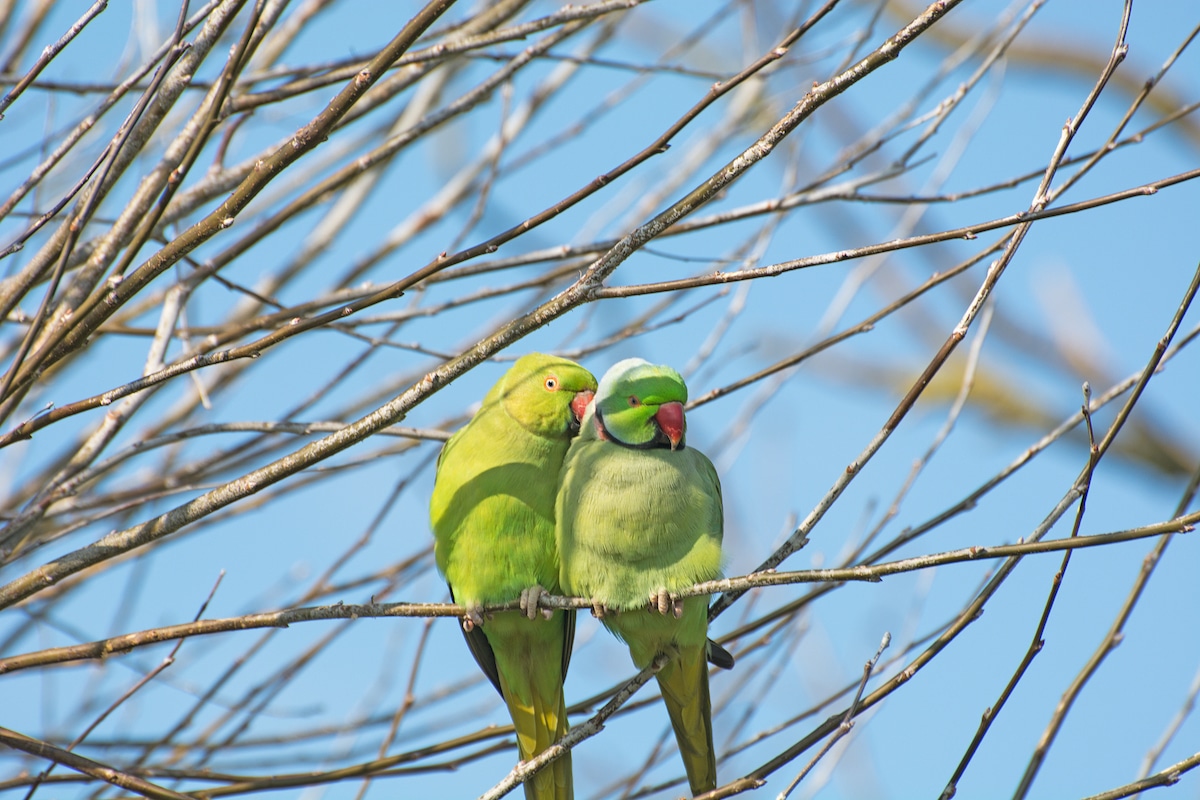
SUBSCRIBE TO THE MAGAZINE
Nobody seems to agree exactly how they first entered Parisian airspace, but resident colonies of rose-ringed parakeets have been observed in and around the French capital as far back as the 1970s. Native to the tropical forests of Africa and India, it is presumed that their ancestors were once either exotic pets or escapees from nearby zoos. Over the decades, these birds have adapted surprisingly well to the decidedly un-tropical climate of metropolitan France – as well as large swaths of western Europe, including Belgium, the Netherlands and England.
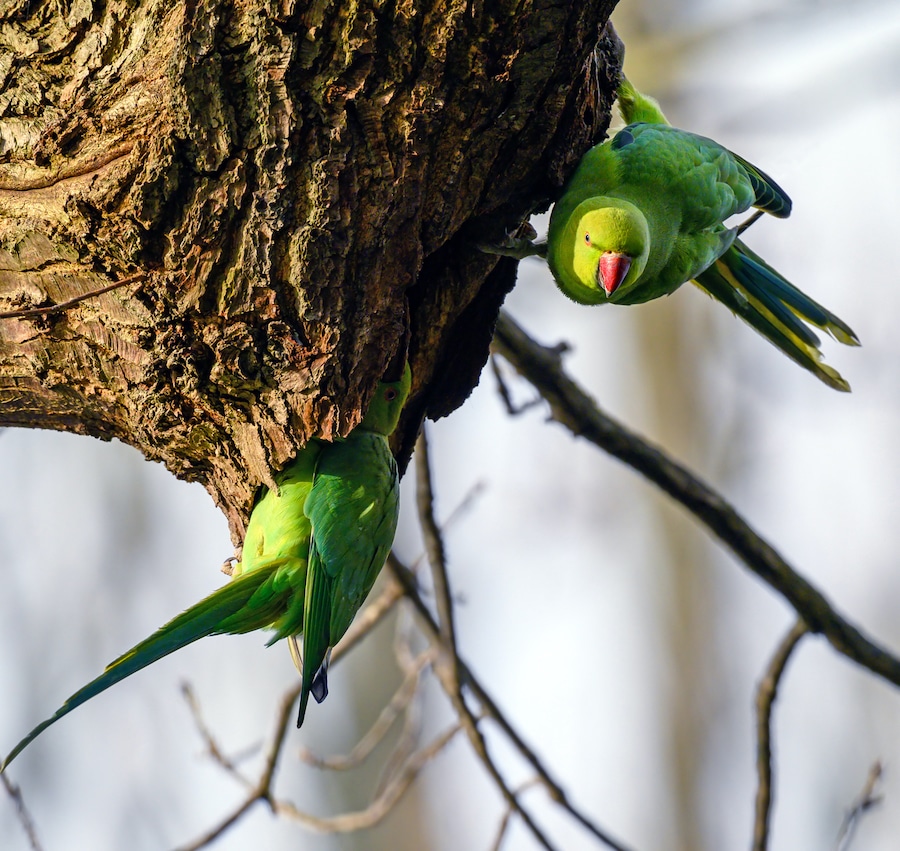
Normally spotted in pairs or as part of large, raucous flocks, the parakeets of Paris are prolific breeders and their population today is estimated to number in the tens of thousands! Once rare, parakeet sightings are now commonplace in most public parks, from the Bois de Boulogne on the city’s western edge to the Bois de Vincennes in the east. Instantly recognizable by their light green plumage, broad pink beaks and the distinctive rings around their necks, Psittacula krameri are relatively large birds – with wingspans ranging between 42 and 48 centimeters (16 to 19 inches). They are resident year-round, and because they have few natural predators, they are known to live for as long as 20 or 30 years…
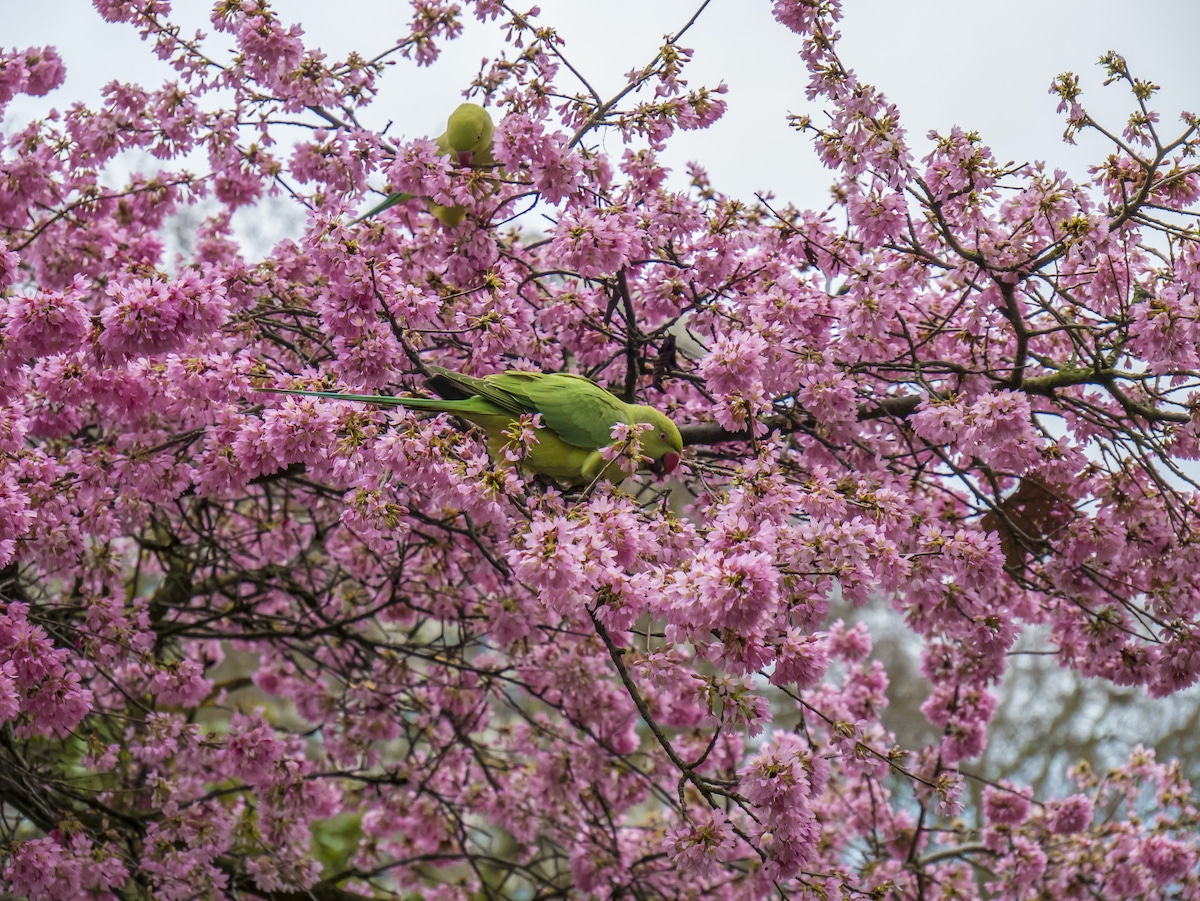
Though far from tame, these feral feathered friends have grown remarkably comfortable in their adoptive home and can occasionally be spotted serving themselves at the feeders that Parisian ornithophiles (bird lovers) place on their balconies – sometimes at the expense of indigenous sparrows, finches and tits. For an invasive species, however, experts say the parakeets have turned out to be relatively neighborly: According to the Ligue pour la Protection des Oiseaux– France’s equivalent to the Audubon Society – the rose-ringed parakeet does not pose a threat to the survival of native bird populations (though they have been known to chase the occasional squirrel.)
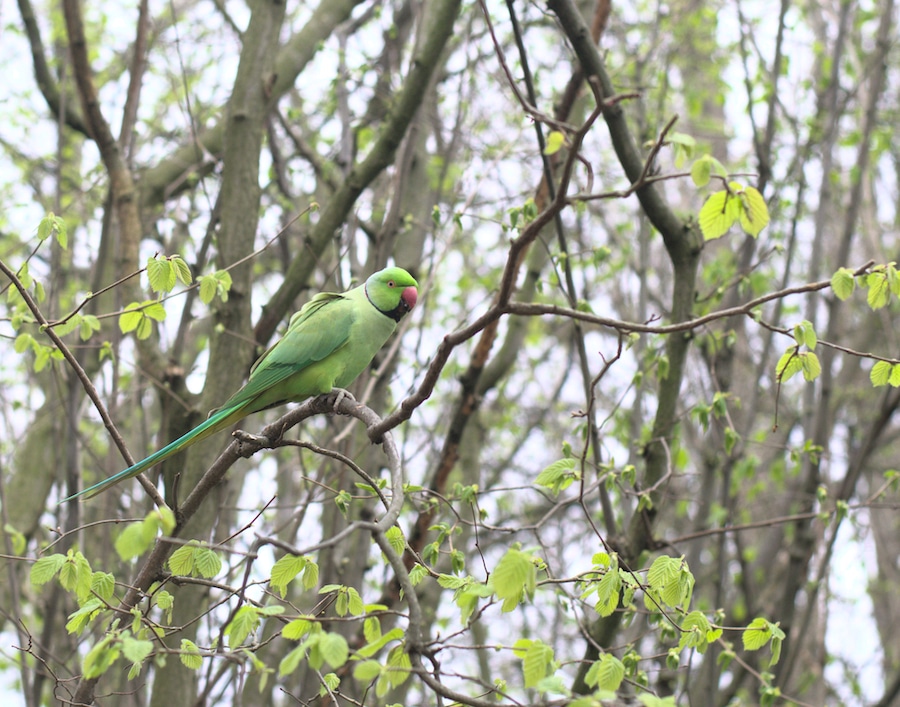
While some Parisians may view the presence of these equatorial transplants as further worrying evidence of climate change, others have embraced them as fully-fledged citizens of the city – nicknamed “Paname” after all, for the tropical straw hats that were a popular 19th century accessory here. And since so few humans are able to resist the charms of Paris, how can we blame these clever birds for doing the same?
Written by Nicola Clark
